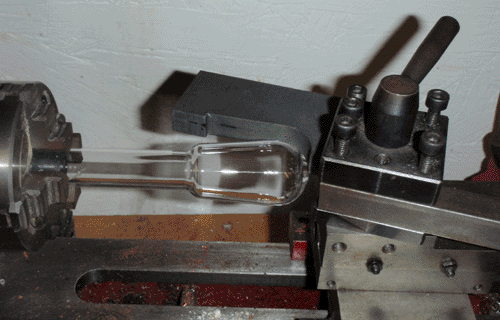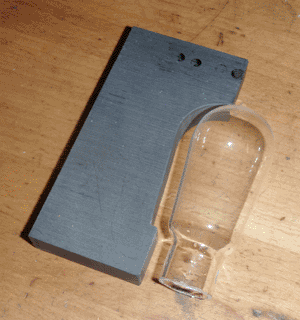

While blowing bulbs by hand is enjoyable, it is difficult to get accurate, reliable results. Using a mold overcomes this problem, allowing for precise components to be manufactured; in this case, a globe-style envelope similar to that of the UX-201A.
Making the mold was straightforward. A length of 1/2 inch by 2 inch graphite bar was milled to shape and cleaned up with a round file and sandpaper. The difficulty came when I attempted to use it. I found through trial and error that the glass must be spun at high speed (300-400 RPM), heated gently, and blown while fairly stiff, starting at the end of the tube and moving from right to left. If the glass is allowed to become too liquid it will sag off-center, become twisted, and possibly damage the mold. Another source of difficulty is that the glass must not be allowed to get too thin, or the friction of the mold will overcome the the structure of the glass and twist it. I have found experimentally that medium-wall Pyrex can be expanded to roughly twice its initial diameter before this begins to occur.
All that being said, the results are worth the effort. With practice, a rotary mold can be used to mass-produce identical envelopes of any shape. The only hand-work that needs to be done is the initial pulling of a point and rounding off the end of the tubing, which is a skill that can be learned in a day. Hopefully this technique will allow me to produce larger, cleaner-looking vacuum tubes in the future.